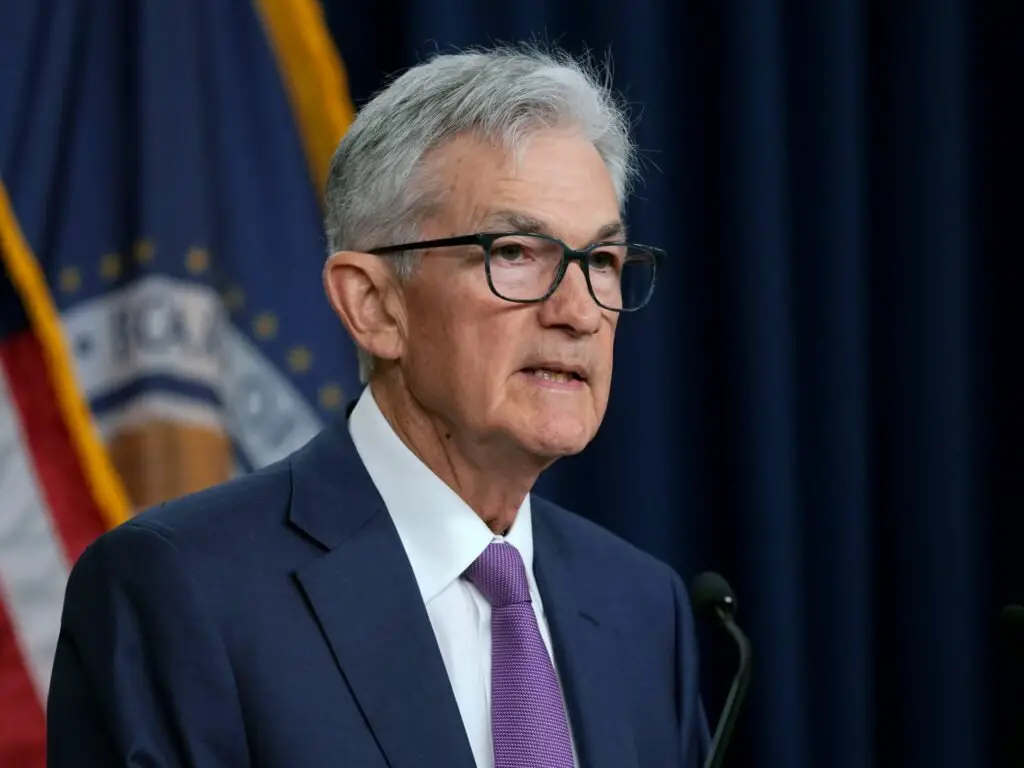Slower progress on inflation means a slower pace of rate cuts, particularly as economic growth is buoyant.
The Federal Reserve has cut interest rates but indicated it will slow the pace of further declines in borrowing costs given a relatively stable unemployment rate and little improvement in inflation recently.
“Economic activity continued to grow at a solid pace,” with the unemployment rate “remaining low” and inflation “remaining somewhat elevated,” the central bank’s Federal Open Market Committee, which sets interest rates, said Wednesday in its latest policy statement .
“In considering the extent and timing of additional adjustments to the target range… the Committee will carefully assess the incoming data, the evolving outlook and the balance of risks,” it said in new language, signaling a likely pause on rate cuts from 2016 the meeting from 28-29. January.
The US central bankers now assume that they will only make two interest rate cuts of a quarter of a percentage point by the end of 2025.
That’s half a percentage point less in monetary easing next year than officials expected in September. The Fed’s inflation forecasts for the first year of the new Trump administration rose from 2.1 percent in its previous forecasts to 2.5 percent now, well above the bank’s median 2 percent target.
“From this point on, it is appropriate to move forward cautiously and look for progress on inflation… from now on we are at a point where the risks are in balance,” Fed Chairman Jerome Powell said in a news conference after the end the central bank meeting two-day political meeting
Powell called the latest rate cut a “closer decision,” noting that the slower pace of projected rate cuts next year reflects higher inflation readings in 2024.
Slower progress on inflation, which is not expected to return to the 2 percent target until 2027, is leading to a slower pace of rate cuts.
Fed officials also raised their estimate of the long-term neutral interest rate – the level that is expected to neither stimulate nor hinder the economy – to 3 percent.
The cut in the key interest rate to 4.25 to 4.5 percent was rejected by Federal Reserve Bank of Cleveland President Beth Hammack, who preferred to leave the key rate unchanged.
“While the Fed has opted to round out the year with a third straight rate cut, its New Year’s resolution appears to be for a slower pace of easing,” said Whitney Watson, global co-head and co-chief investment officer of fixed income and securities liquidity solutions for Goldman Sachs Asset Management. Watson added: “We expect the Fed to choose to forego a rate cut in January before resuming its easing cycle in March.”
Trump uncertainty
The new key interest rate is now one percentage point below the peak in September, when officials concluded that inflation was safely on the way back to the 2 percent target and that there were risks to the labor market if monetary policy remained too long be kept strictly.
Since then, however, key inflation indicators have largely moved sideways, while persistently low unemployment and stronger-than-expected economic growth have sparked debate among policymakers about whether monetary policy is as restrictive as thought.
The latest quarterly forecasts are the first since President-elect Donald Trump’s victory in the Nov. 5 election, which brought a new level of uncertainty to the economic outlook given his campaign promises of tax cuts, tariff increases and a crackdown on unauthorized immigration – aspects of what analysts see as inflationary.
Trump doesn’t take office until Jan. 20, and Fed officials have said they can’t base their monetary policy on campaign proposals that may or may not be implemented.
Still, Fed staff have likely run through various scenarios, and policymakers’ forecasts show growth next year remaining above potential at 2.1 percent, inflation remaining above target for two more years and the unemployment rate never above 4 .3 percent increases.





